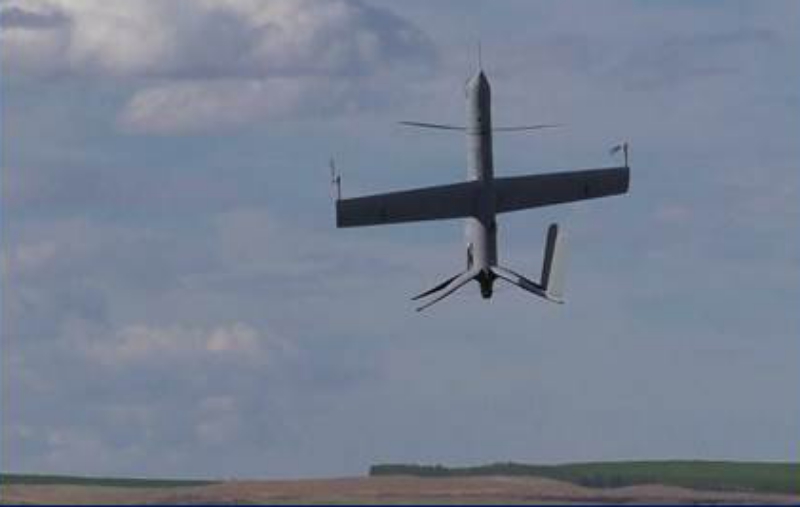Buffeted by wind gusting in moments from 20 kt to nearly calm and back again, an Aerovel Flexrotor, nose to the sky, opens its rear fuselage into a petal of landing legs. It remains doggedly on-station as it prepares for touchdown, and lands gently on a target barely bigger than its leg span.
Its robust handling of rough conditions is the product of several years’ collaborative research between Aerovel and the Autonomous Flight Systems Laboratory at the University of Washington.
Tad McGeer, Aerovel’s founder, observes that
“a Flexrotor hovering like that is experiencing in seconds the whole of what is known in helicopter parlance as the translational-lift regime, in which not only aerodynamic loads but also control effectiveness change sensitively with relative wind. In order to achieve the robustness that we want in rough air, we had to handle this regime with some unusual autopilot design. I’ve been collaborating with UW for decades so it was natural for us to explore the problem together.”
The project became the doctoral research focus for Kris Gauksheim, who completed his PhD in 2021.
“Flexrotor stands apart from other VTOL aircraft in its high efficiency and exceptional endurance,” says Dr Gauksheim, “but it turns out that its very efficiency, and autonomy, demand unusual care in flight control. It is all too easy to get into trouble. Only a limited amount of previous work is applicable, and it wound up having to be pruned and extended to produce a solution that is robust and practical for field service.”
Juris Vagners, professor emeritus of Aeronautics and Astronautics, supervised the research for AFSL. He remarks that
“this is what we like to do at AFSL: leading-edge research that winds up not just in publications, but also in production aircraft, while involving students in real-world applications of small Unmanned Aerial Systems.”
About Aerovel CorporationAerovel Corporation of Bingen, Washington USA builds Flexrotor, a small unmanned aircraft that has brought unprecedented payload/range, autonomy, economy, and basing footprint to operations from ship and shore in regimes from the high Arctic to the high desert of Asia to the tropical mid-Pacific. Flexrotor’s maximum weight of 55 lb / 25 kg puts it in the “Group 2” class of unmanned aircraft, but in terms of capability it is well into Group 3. Aerovel’s team includes pioneers of the miniature-aircraft concept in the 1990s, and it continues to lead the field into the 2020s.About the Autonomous Flight System LaboratoryAFSL was established to provide a focal point for University of Washington students interested in hands-on experience with autonomous flight by multirotor and fixed-wing UAVs. The Lab invites participation by graduate students for thesis work, undergraduates from a variety of engineering departments, and interns from high schools. AFSL activities are supported by traditional research grants as well as gifts from industry and individuals. The AFSL website, provides information about some of its past and current projects.
Source: Press Release

